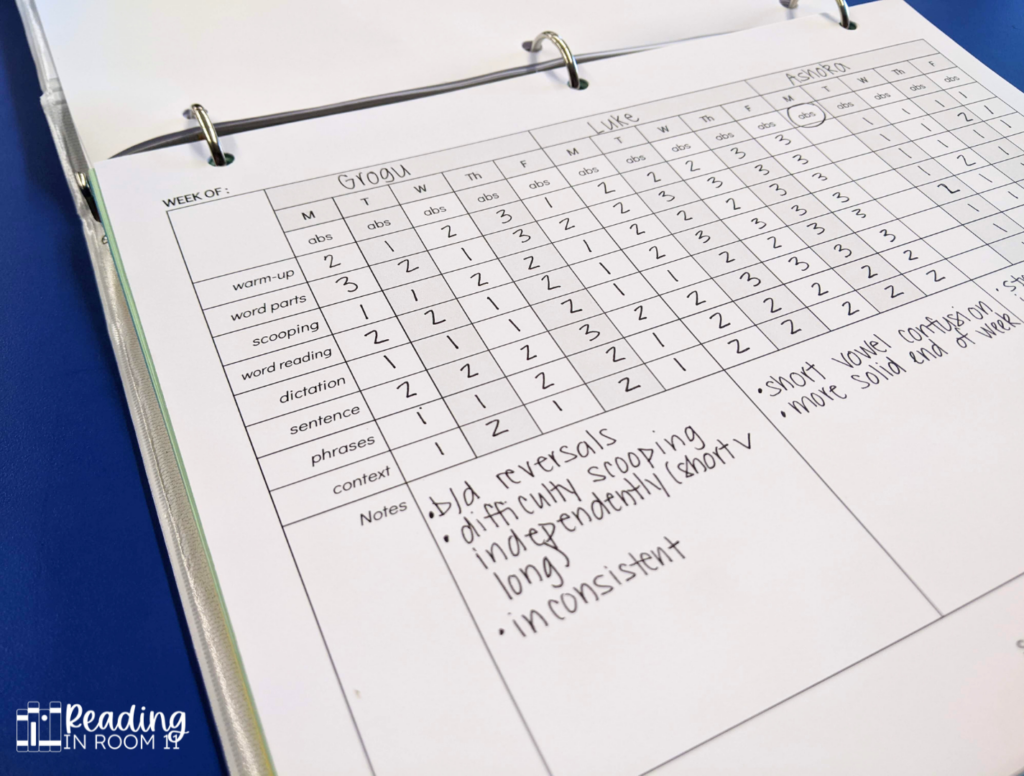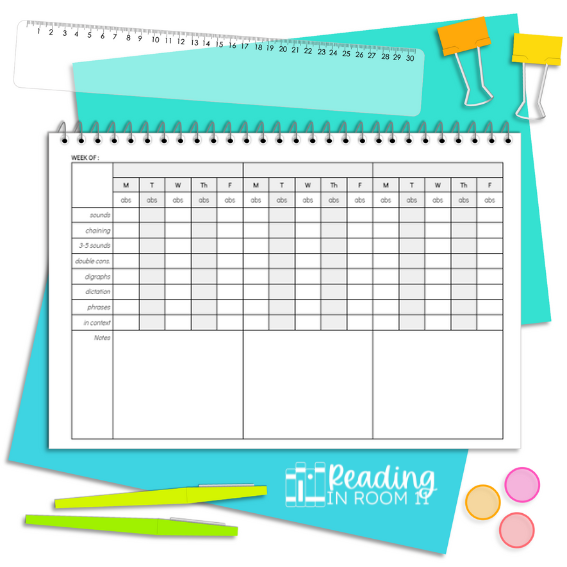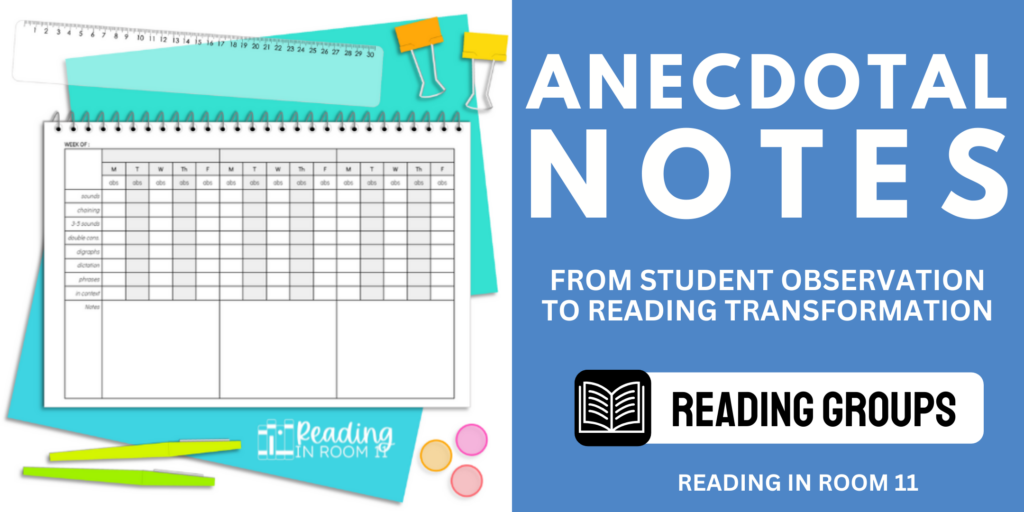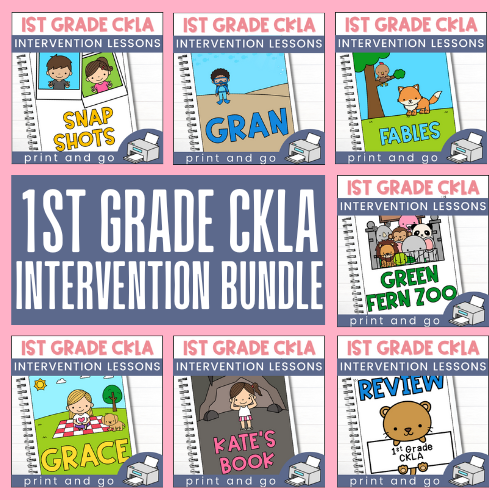Are you struggling to find an easy system for monitoring your student’s progress? Trust me, I’ve been there too; so many students, so many meetings, so much progress to report on, and not enough time for any of it! As a reading teacher seeing 11-12 groups a day, having an easy system for notes is critical.
I want to introduce you to the game-changing solution that has transformed how I approach tracking student growth – anecdotal notes! I can’t wait to tell you how anecdotal notes can revolutionize your classroom, and I have a free template for you to use. Let’s dive in and explore the power of anecdotal notes in elevating your ability to track students’ reading progress.
WHAT ARE ANECDOTAL NOTES?
Anecdotal notes are like mini-observations that can help quickly track student progress and identify areas of growth or improvement. They are informal and can be broken down into steps based on your lesson.
The best part about the anecdotal notes I will share with you is that they can be personalized, used with groups of students, and offer a comprehensive understanding of individual students’ strengths and weaknesses and the group overall.
Here is a closer look at my notes:

WHY ARE ANECDOTAL NOTES IMPORTANT?
Anecdotal notes play a crucial role of anecdotal notes in reading groups, specifically intervention groups. They help tailor your support for the reading group you are working with as well as individuals within that group.
I keep specific groups’ anecdotal notes together. This allows me to see students’ progress within a specific skill area over time. In addition to identifying strengths and weaknesses, anecdotal notes are also a way to collect data on a student. This data helps determine the effectiveness of an intervention.
It is also helpful to reference anecdotal notes when meeting with teammates, colleagues, and parents. The data you have collected can be a powerful tool in determining the level of service a student needs (Tier, group size, duration) and make writing progress reports a breeze!
HOW TO USE ANECDOTAL NOTES EFFECTIVELY
- Find an organizational system that works. As I mentioned earlier, I organize my anecdotal notes by group. I bind my notes together, but you can easily staple them or keep them in a binder.
- Keep your notes close! Keep your notes close by during reading groups so you can quickly fill them in as you go. I usually have them on my lap or on the table.
- Choose a rating system. My district uses standard-based grading, so I use a 3-2-1 scale that aligns with our report cards to note student progress. You could also use a +/- symbol to indicate a student’s success or difficulty within particular areas.
- Use the notes section. This is a place where you can be more specific with your observations. You can note vowel confusion, letter reversals, and behavioral observations regarding inattention and/or distractibility.

USE ANECDOTAL NOTES TO GUIDE YOUR INSTRUCTION
I have customized my anecdotal notes to follow along step by step with the interventions I use with my reading groups. The main interventions I use are Heggerty, REWARDS, CKLA Interventions, and Syllable Type Interventions.
REWARDS, CKLA Interventions, and Syllable Type Lessons are sequenced so that students build on their knowledge and skills as they progress through the steps of each lesson.
- Daily Pacing: Looking over my anecdotal notes help track how each student is doing in a specific area. For example, with Heggerty lessons, the notes may show me that I can move quickly through the rhyming section, but I need to spend more time teaching students how to manipulate the initial phoneme.
- Specific Gaps: Taking anecdotal notes can help me look at the scaffolded layers of reading and fluency to help me determine where students are breaking down. For example, a student may be reading slowly but accurately. My note may show that they still stretch out every word, affecting their automaticity. This means I need to ensure they have solid phonemic awareness and need more practice at the word reading level.
- Student Regrouping: There are times that I have more than one group working on the same skill. Anecdotal notes have helped me tweak my reading groups by having students with specific needs together.
I’M READY TO GIVE ANECDOTAL NOTES A TRY
Great, I’m so happy to hear it! Click the picture below to grab your free copies. There is a blank PDF and a Google Doc that you can edit to meet the needs of your group and lesson format.

If you are looking for interventions with anecdotal notes, I’ve also got you covered there. Grab your CKLA Intervention Lessons and Syllable Type Intervention Lessons.
FINAL THOUGHTS
Incorporating anecdotal notes into your teaching toolkit can revolutionize how you track student progress in reading groups. With personalized observations, data collection, and focused interventions, these mini-observations become your secret weapon for effective teaching.
PIN FOR LATER



